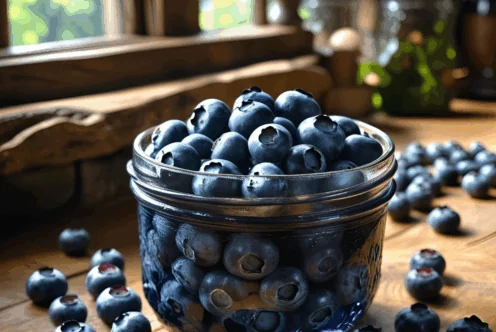Blog
Select Fish as Your Protein of Choice

Growing up, my brothers and I all detested fish. Even the heavily breaded frozen fish sticks were too fishy tasting for us. Any time my mom would make them, we would drown them in a heavy dose of either ranch dressing or ketchup to try to mask the flavor. However, as we grew older, our palates evolved, and we all absolutely love fish now!
Not only does fish taste great, but it also serves as a delightful change of pace from typical protein choices such as beef, pork, chicken, or eggs. More importantly, fish is an amazing protein source that provides plenty of omega-3 fatty acids, which are essential for our overall health. In recent years, there has been a growing emphasis on including more seafood in our diets due to its numerous health benefits and versatility in the kitchen.
The Nutritional Powerhouse of Fish
Fish is not only tasty, but it is also one of the healthiest protein choices available. It is generally low in saturated fat and rich in protein, vitamins, and minerals. One of the standout features of fish is its high content of omega-3 fatty acids, particularly EPA (eicosapentaenoic acid) and DHA (docosahexaenoic acid). These are essential fats that our bodies cannot produce on their own, making it crucial to obtain them through our diet.
Benefits of Omega-3 Fatty Acids
Omega-3 fatty acids have been extensively studied for their numerous health benefits. Some key health benefits include:
- Heart Health: Regular consumption of omega-3s can reduce inflammation, lower blood pressure, and decrease triglycerides, ultimately contributing to a healthier heart. According to the American Heart Association, eating fatty fish like salmon or mackerel at least twice a week can significantly improve cardiovascular health.
- Brain Function: DHA is particularly important for brain health. It is a major structural component of the brain, and studies have linked omega-3 fatty acids to improved cognitive function and reduced risk of neurodegenerative diseases such as Alzheimer’s. The Alzheimer’s Association emphasizes the importance of incorporating omega-3 rich foods into your diet for better brain health.
- Mood Regulation: Omega-3 fatty acids are also believed to play a role in mental health. Research indicates that they may help reduce symptoms of depression and anxiety. A review article in the journal Psychiatry Research found a positive correlation between omega-3 intake and mood stabilization.
- Eye Health: DHA is a major component of the retina in the eye, making omega-3s crucial for maintaining eye health. A study published in the journal BMJ Open Ophthalmology suggests that higher dietary intake of omega-3 fatty acids is associated with a reduced risk of age-related macular degeneration (AMD).
- Joint Health: Omega-3s have anti-inflammatory properties that can help alleviate symptoms of arthritis. The Arthritis Foundation recommends consuming fatty fish to help manage joints and reduce inflammation-related pain.
Given these benefits, it’s clear that including fish in your diet is beneficial for both physical and mental health.
A Variety of Fish to Choose From
Registered dietitian Isabel Vasquez provides a list of some of the best fish that offer both high protein content and a wealth of nutrients, including omega-3s. Below are some of the top contenders, along with their nutritional highlights:
1. Mahi Mahi
Mahi Mahi is a lean fish with a mild flavor and firm texture. It is low in calories and high in protein, making it an ideal choice for a healthy meal. Additionally, it’s a good source of selenium and vitamin B12.
2. Mackerel
Mackerel is a fatty fish that’s rich in omega-3 fatty acids. It’s also an excellent source of vitamin D and selenium. Just one serving can provide a tremendous boost to your omega-3 intake. Check out Mackerel Nutrition Facts for more information.
3. Sea Bass
Sea Bass is known for its delicate flavor and flaky texture. It’s rich in protein and provides essential nutrients like potassium and vitamin B6. Here are the Sea Bass Nutrition Facts for you to explore.
4. Atlantic Cod
Cod is a versatile fish that can be baked, fried, or grilled. It’s low in fat but high in protein, making it a favorite among health-conscious eaters. It also contains phosphorus, niacin, and vitamin B12. Atlantic Cod Nutrition Facts provide a deeper look.
5. Sockeye Salmon
Sockeye Salmon is famous for its rich flavor and vibrant color. It is one of the best sources of omega-3 fatty acids and vitamin D. Besides that, it’s packed with protein and essential nutrients. Learn more about its nutrients by viewing the Sockeye Salmon Nutrition Facts.
6. Tilapia
Tilapia is a mild-flavored fish that’s an affordable source of protein. Even though it has a lower omega-3 content compared to fatty fish, it remains a good source of phosphorus, selenium, and vitamin B12. Find the Tilapia Nutrition Facts.
7. Trout
Trout, particularly rainbow trout, is a nutrient-dense fish that is rich in omega-3s. It has a delicate flavor that pairs beautifully with a variety of herbs and spices. Check out the Trout Nutrition Facts.
8. Sardines
Sardines are small but mighty when it comes to nutrition. Packed with omega-3s, vitamin D, and calcium (when you eat the bones), sardines are a powerhouse of nutrients. They are also extremely versatile for meals. Explore more with the Sardines Nutrition Facts.
9. Snapper
Snapper has a mild, sweet flavor and flaky texture, making it popular among seafood lovers. It’s rich in protein and vitamin B12, along with several other beneficial nutrients. You’ll find more in the Snapper Nutrition Facts.
10. Pollock
Pollock is widely used in fish sticks and imitation crab. It is low in fat and calories while still providing a good amount of protein. It also contains omega-3 fatty acids, though in lower amounts than some other fish. Check the Pollock Nutrition Facts for details.
11. Haddock
Haddock is synonymous with fish and chips in many cultures. It’s low in calories and fat but high in protein. It provides several important nutrients, including selenium and vitamin B12. More can be found in the Haddock Nutrition Facts.
12. Grouper
Grouper is a mild-flavored fish with a firm texture. It’s a good source of protein and provides selenium and phosphorus. Its versatility allows it to be used in a range of dishes. Find the Grouper Nutrition Facts here.
13. Catfish
Catfish is a popular choice in Southern cuisine. It is mild in flavor and relatively low in calories but high in protein. It provides healthy options for fryers or grill enthusiasts. Catfish Nutrition Facts.
14. Anchovies
Anchovies are small fish that pack a big punch when it comes to flavor and nutrition. They’re rich in omega-3s, calcium, and other beneficial nutrients. They are often used as a flavoring agent in various dishes. Learn more from the Anchovies Nutrition Facts.
15. Canned Tuna
Canned tuna is a staple pantry item for many households. It’s a convenient source of protein and omega-3s. While it is lower in fat, it’s important to opt for varieties packed in water for a healthier option. Here are the Canned Tuna Nutrition Facts.
Including a variety of these fish in your diet can greatly enhance your nutritional intake while providing delicious meal options.

Cooking Fish: Tips and Techniques
To truly enjoy the benefits of fish, knowing how to prepare and cook it effectively is essential. Here are some tips and techniques to ensure that your fish is both nutritious and delicious:
1. Choose Fresh Fish
When possible, opt for fresh fish over frozen or processed varieties. Look for bright, clear eyes, firm flesh, and a fresh smell when purchasing fresh fish at the market. If you’re unsure about freshness, consider asking your fishmonger.
2. Simple Seasoning
Fish has a natural flavor that often requires minimal seasoning. Lemon, garlic, herbs, and spices work well to enhance its taste without overwhelming it. A simple lemon-garlic seasoning can elevate the flavor while retaining its health benefits.
3. Use Healthy Cooking Methods
Opt for healthier cooking methods such as grilling, baking, steaming, or poaching, rather than frying. Pan-searing with a little olive oil or seasoning the fish with herbs before grilling can also be a fantastic way to enjoy fish without unnecessary added fats.
4. Incorporate Healthy Sides
Pair fish with healthier sides to create a wholesome meal. Consider roasted vegetables, salads, or whole grains to accompany your fish dish. This not only enhances the meal but also boosts the nutritional value.
5. Experiment with Recipes
Fish can be used in a variety of dishes, from tacos and soups to salads and casseroles. Don’t hesitate to try different recipes to explore flavors and textures. Websites like Fill Your Plate have an array of delicious fish recipes right here in Arizona.
Conclusion
Fish is undoubtedly a nutritious and delicious protein option that everyone should consider adding to their diet. From its wealth of omega-3 fatty acids to its exceptional protein content, fish provides numerous health benefits while offering delightful flavors and culinary versatility.
As tastes change and evolve, so can our nutrition choices. By embracing fish as a central protein in our meals, we can significantly enhance our overall health and culinary experience. From Mahi Mahi to canned tuna, the variety of fish available allows for endless possibilities in the kitchen, making it easier and more enjoyable to incorporate this nutrient-rich food into daily life.
For more articles about fish and how to incorporate it into your meals, check out these resources from Fill Your Plate:
- Eat More Fish – Fill Your Plate Blog
- Arizona Agriculture Raises Fish in the Desert! – Fill Your Plate Blog
- Add More Fish to Your Diet! – Fill Your Plate Blog
- Fish Roe—Not Just for Sushi – Fill Your Plate Blog
By exploring the diverse world of fish, you are not just changing your meals but also taking a step toward a healthier lifestyle. Don’t hesitate to experiment and find your favorite fish recipes; your taste buds—and your body—will thank you!
By Heide Kennedy, Arizona Farm Bureau Communications Intern


















